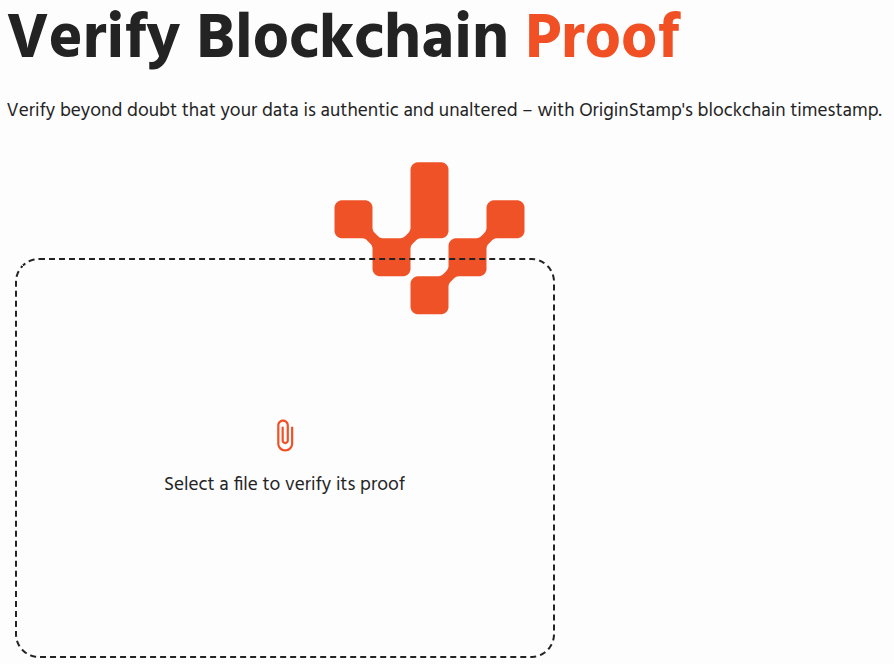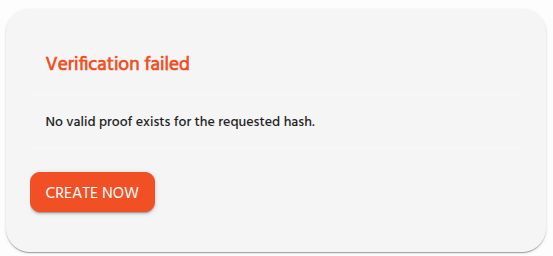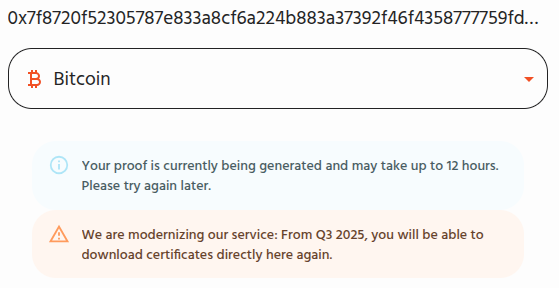# Verification of Timestamps
This document gives you an overview on how you can verify the status of your timestamp with the help of OriginStamp.
The status of the verification is displayed for each cryptocurrency available, it is subdivided into four different states:
| ID | Status | Description |
|---|---|---|
| 0 | unsubmitted | Hash is assigned, but the Merkle Tree has not been created yet. This is the initial state. |
| 1 | submitted | The hash was included into a transaction and broadcasted to the network, but not included into a block. |
| 2 | included | The transaction was included into the latest block. |
| 3 | verified | The timestamp for your hash was successfully created and permanently included in the blockchain. |
Once the final verified status is reached, each user received a webhook informing them that the root hash of the merkle tree has been included in the blockchain and thus any hashes linked to it are now securely timestamped.
# Technical verification as a client
Once you have submitted a hash to OriginStamp, it enters the timestamp lifecycle and is eventually embedded into a blockchain via a Merkle Tree. As a client, you can verify that your timestamp has been successfully anchored using two main methods:
# Webhook-based Verification (Recommended)
After the hash has been processed and included in a Merkle Tree, OriginStamp will notify you via webhook once the corresponding blockchain transaction is verified.
You’ll receive a webhook payload that includes details about the finalized Merkle Tree and the blockchain anchoring, see also the webhook section.
This allows you to programmatically confirm that your hash has been securely and immutably stored.
Make sure you’ve configured your webhook endpoint under your OriginStamp API Key setting to receive these notifications automatically.
# Status Check (Fallback)
If you are unable to receive webhooks (e.g., due to network restrictions or missed events), you can check the status of the linked Merkle Tree. See also in our API Reference (opens new window)
This provides a reliable fallback mechanism to independently verify timestamps even if webhook delivery fails.
# Using the Verification Page
OriginStamp offers its own verification page to easily verify any files or data that has been timestamped over the OriginStamp API:
https://verify.originstamp.com/ (opens new window)
You must keep the data in its original form ready to recreate the hash - be it as a local file or as plain text. For the recalculation, a client-side script is executed to calculate the corresponding hash. An upload of the original data does not take place.
# Status Verification
- Select a file

If the generated hash is not known, the status display says: No valid proof exists for the requested hash..

If the hash is known, the processing status of the hash is explained.

The four different steps are to be interpreted as follows:
- Hash value submitted to OriginStamp.
- Hash sent to blockchain network.
- Transaction included in the latest block.
- Transaction confirmed and timestamp secured in blockchain.
TIP
Only after the transaction has been confirmed in the last step, the hash is considered complete and finally timestamped.
